YYYYMMDD >>> BACK HOME <<< >>> SELECTED FEATURES <<< >>> HIDDEN ARCHIVE <<<
[20221028]
ORIGINAL FEATURES by LATEFA WIERSCH at KUNSTHAUS LANGENTHAL curated by RAFFAEL DÖRIG and EVA-MARIA KNÜSEL [from 20220825 to 20221113]
[Photos: CE]
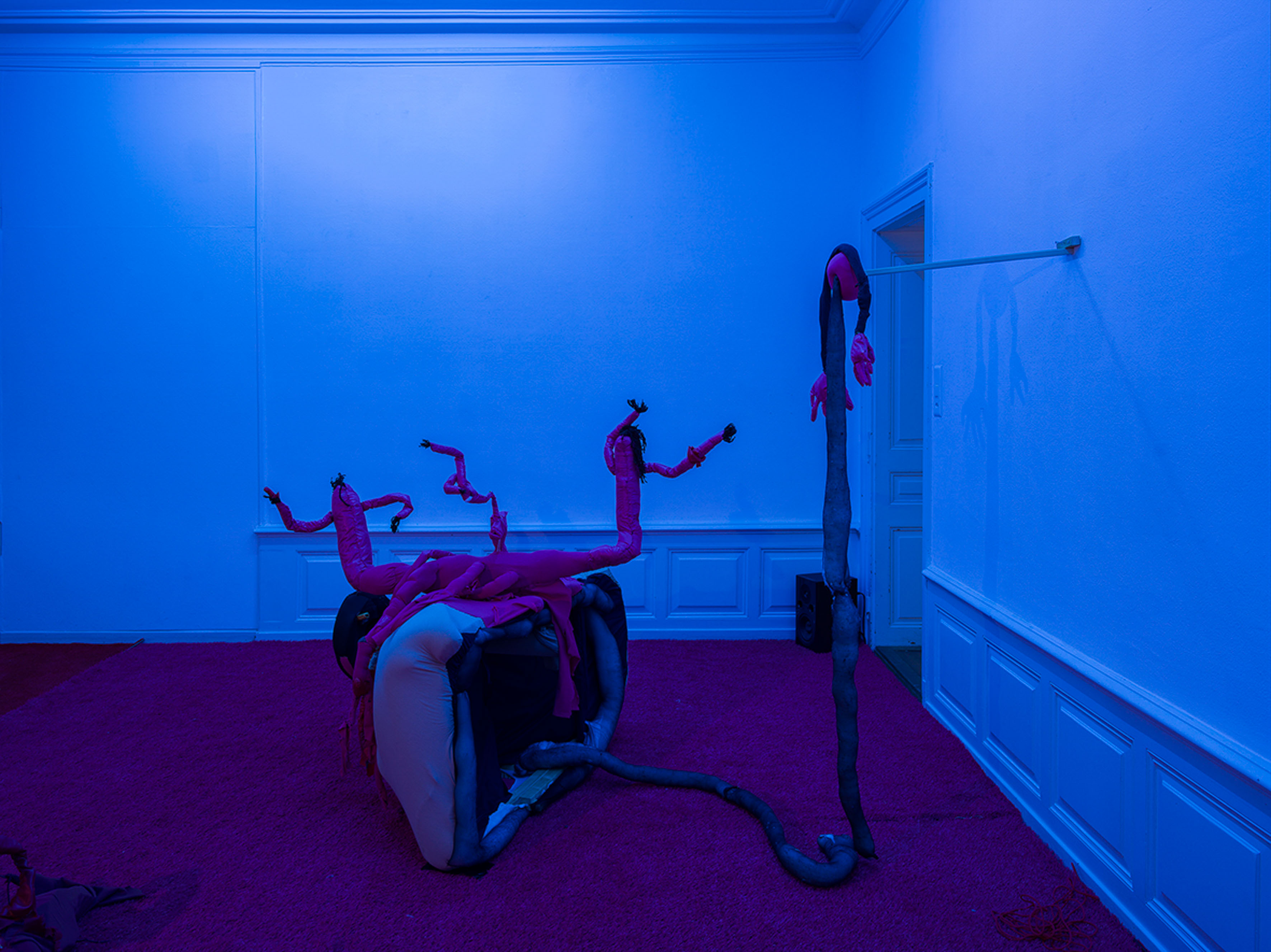


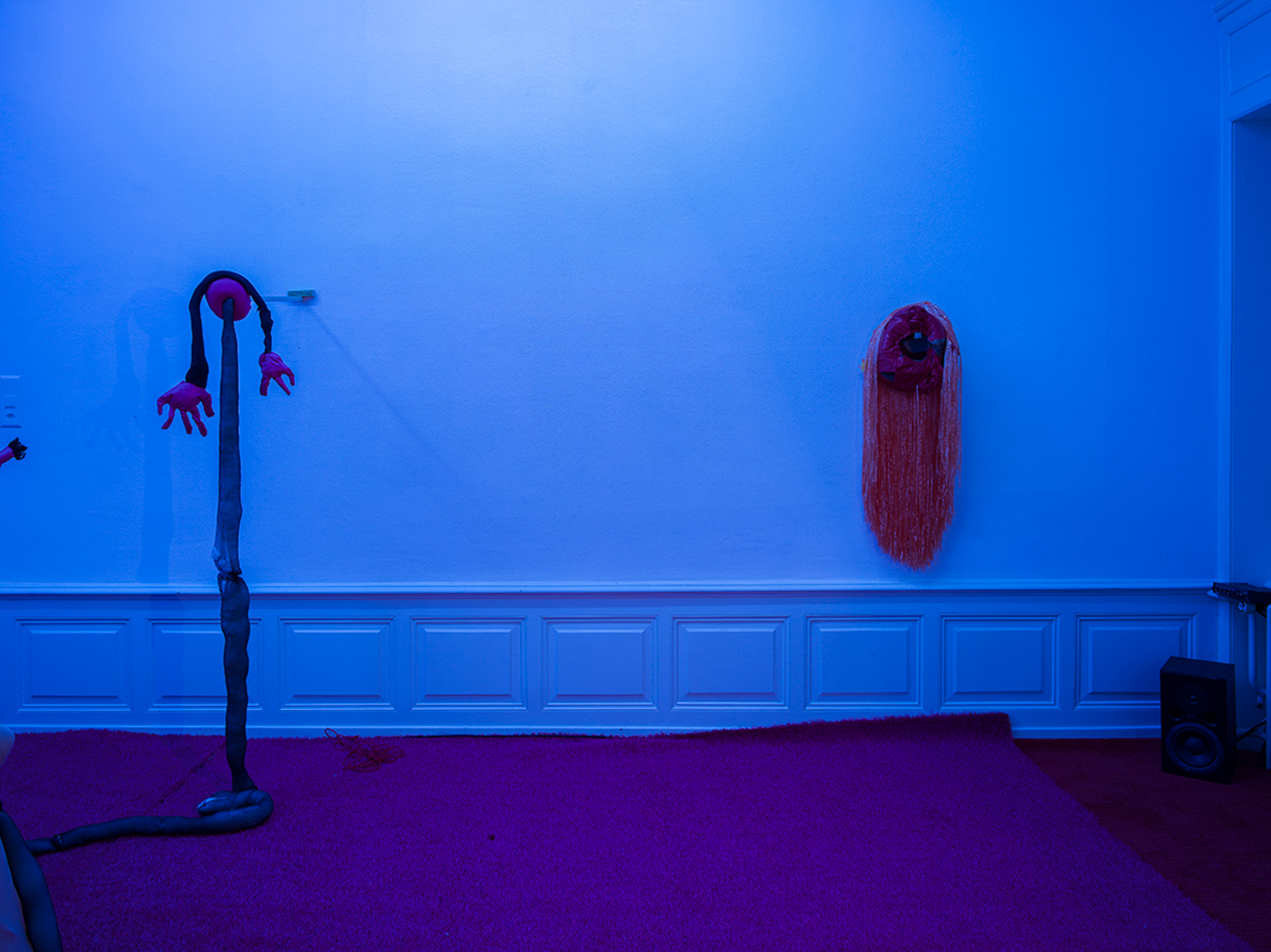
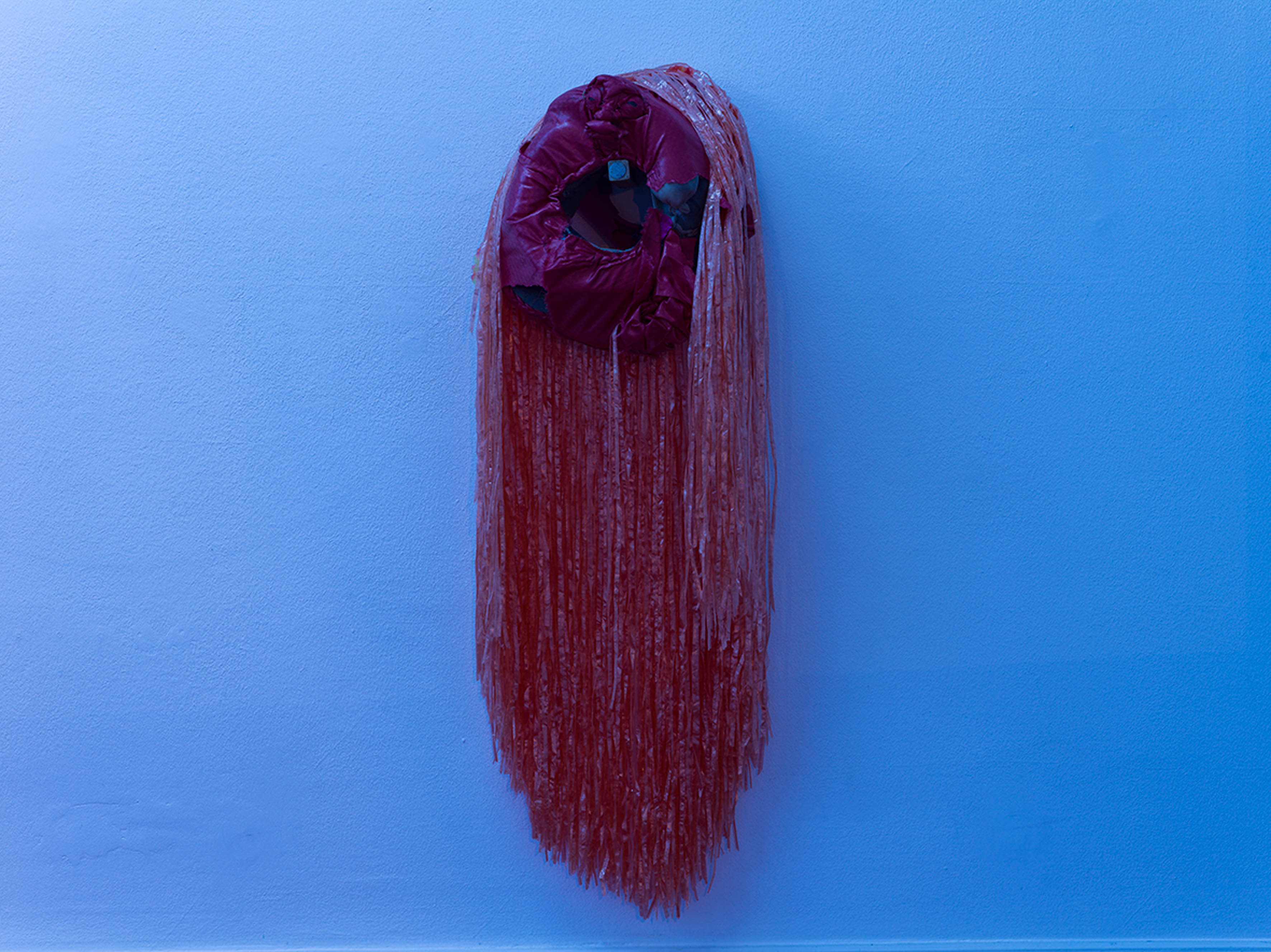

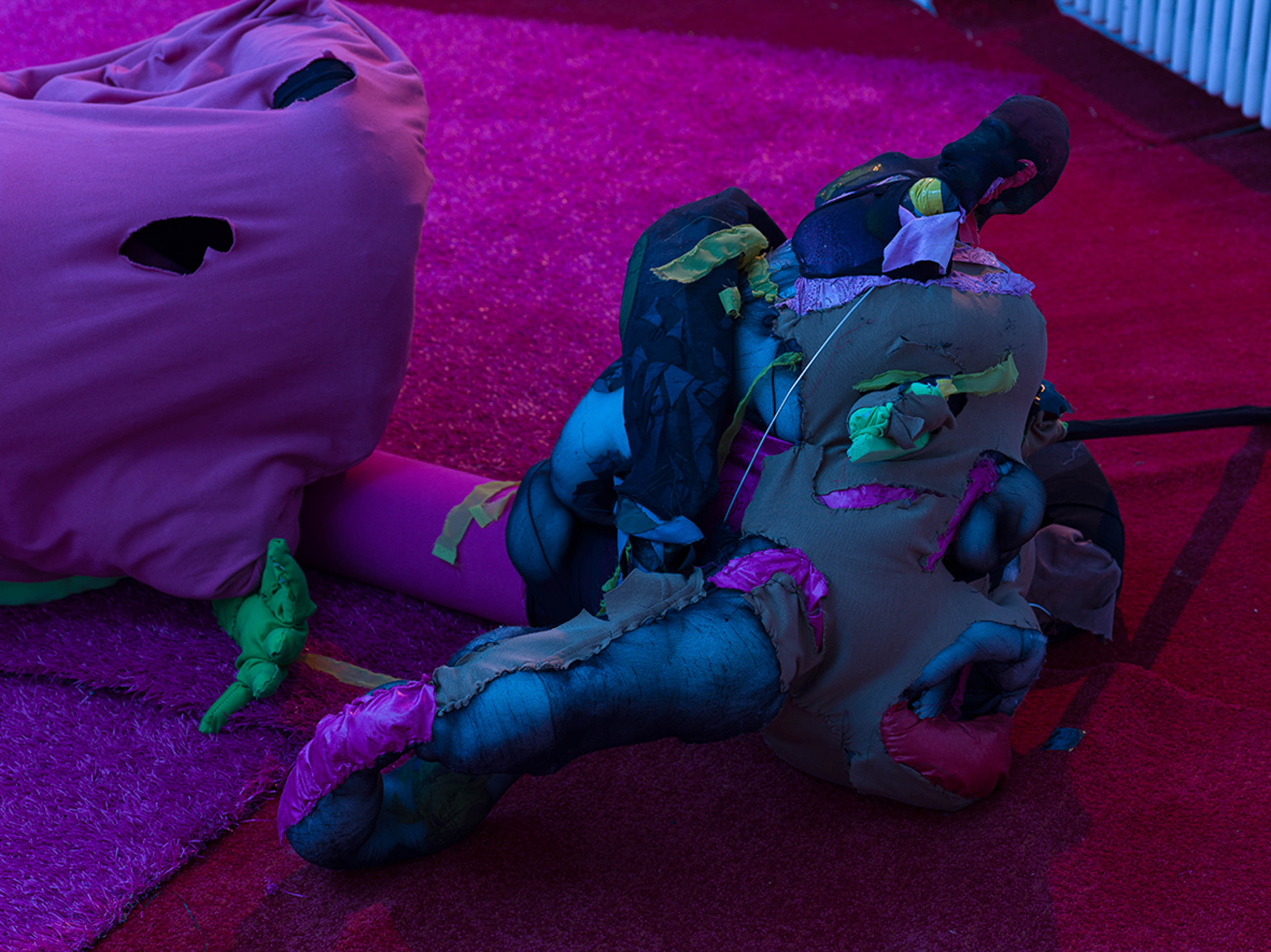
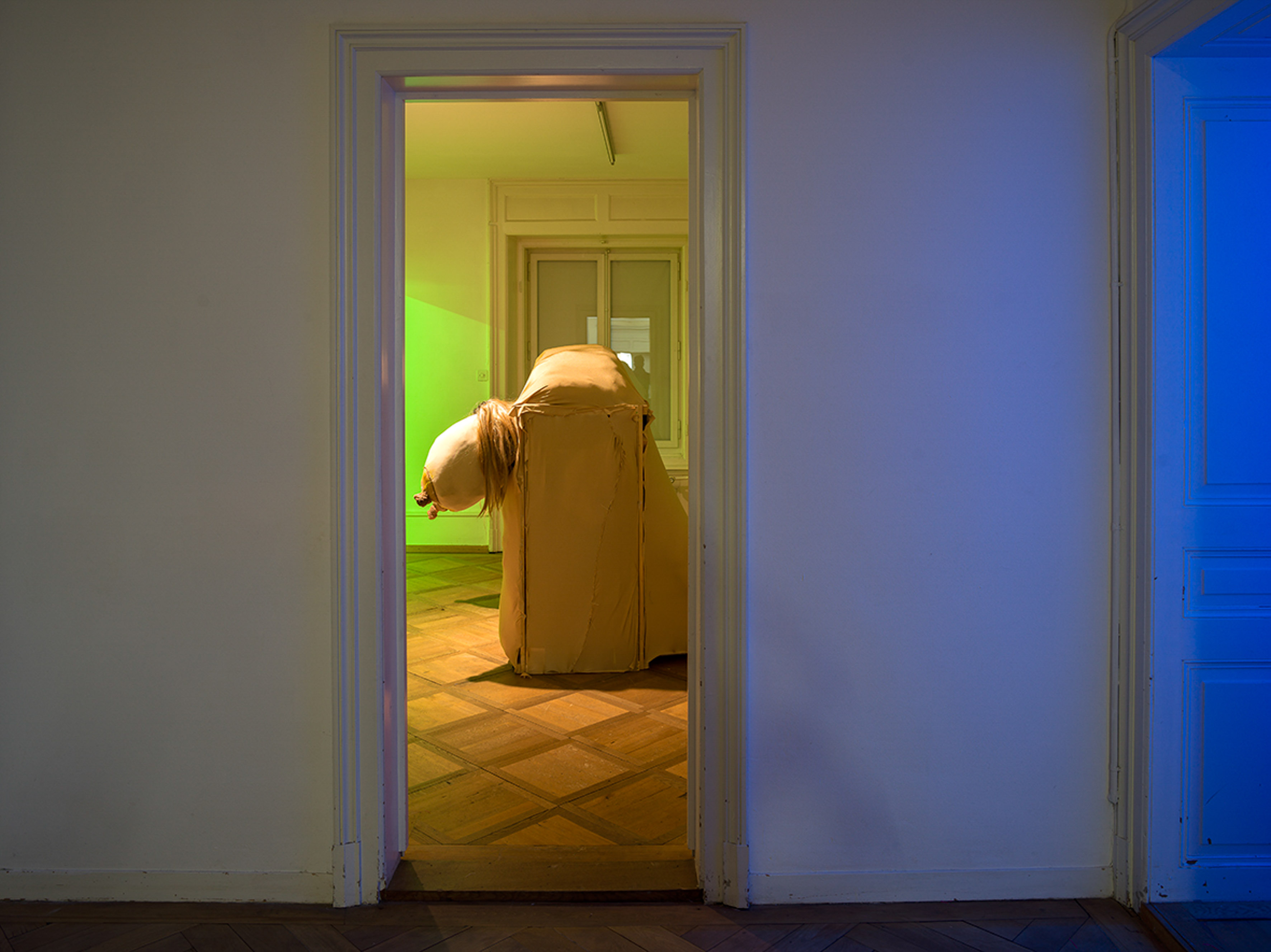
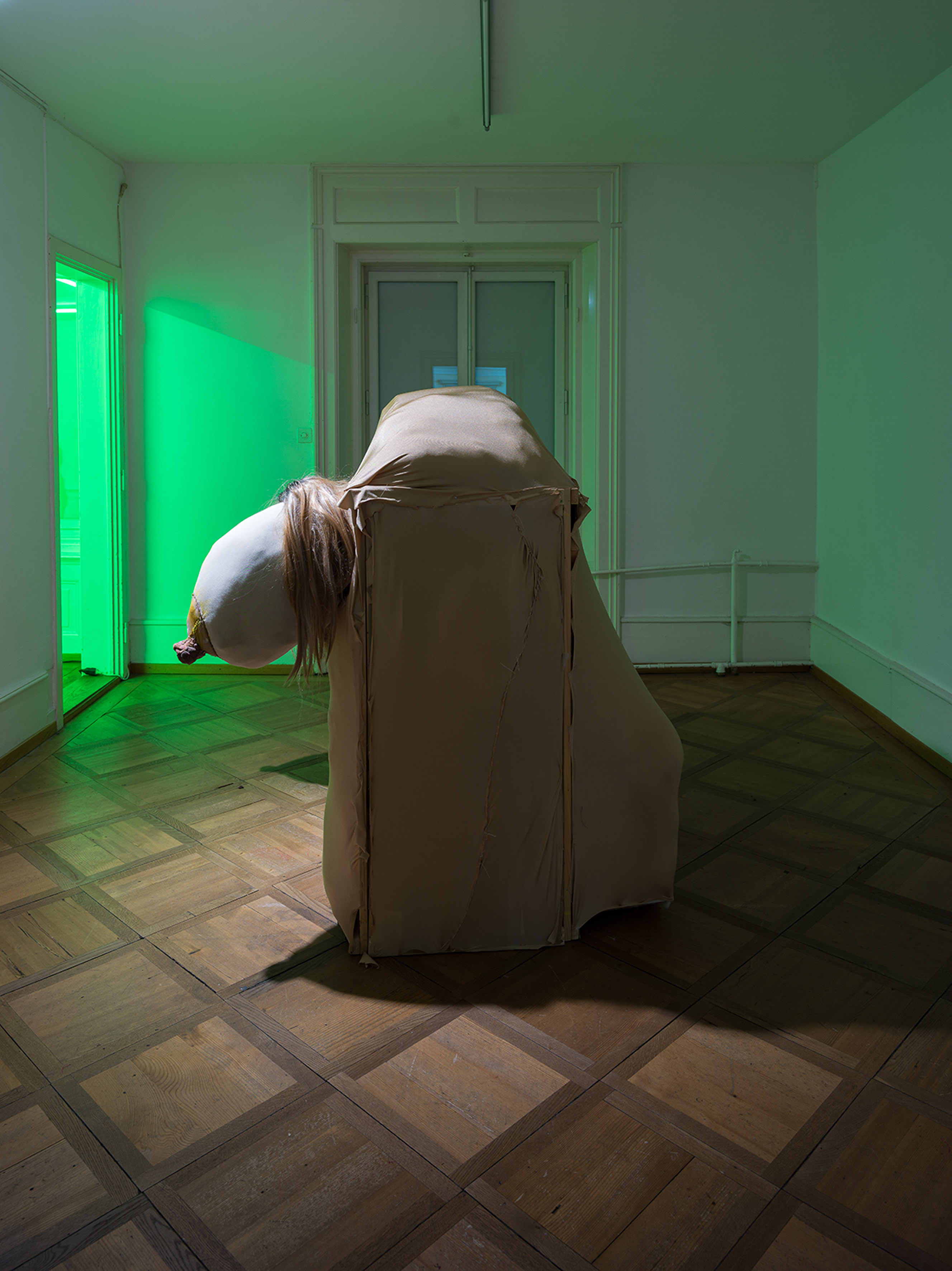

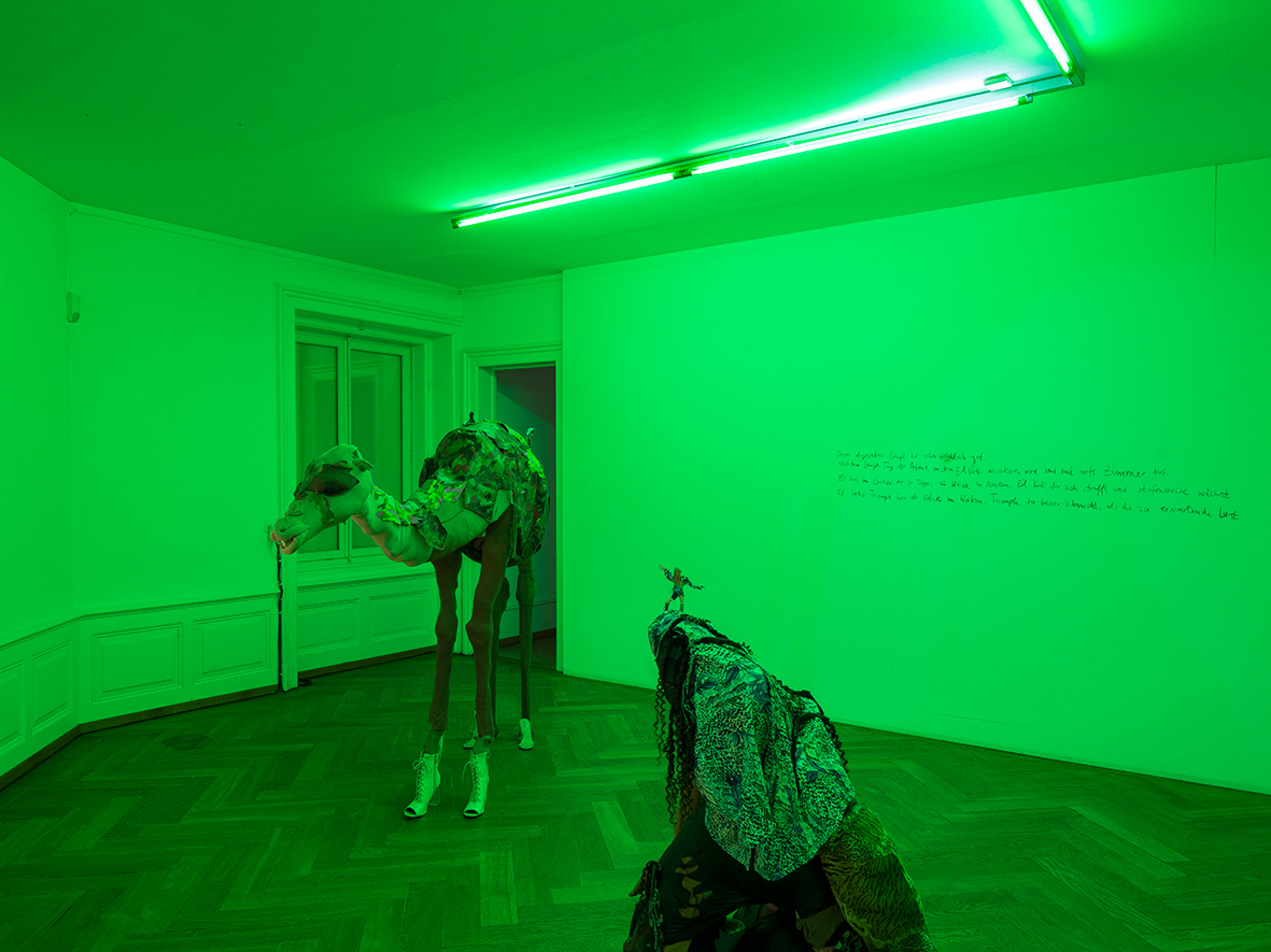


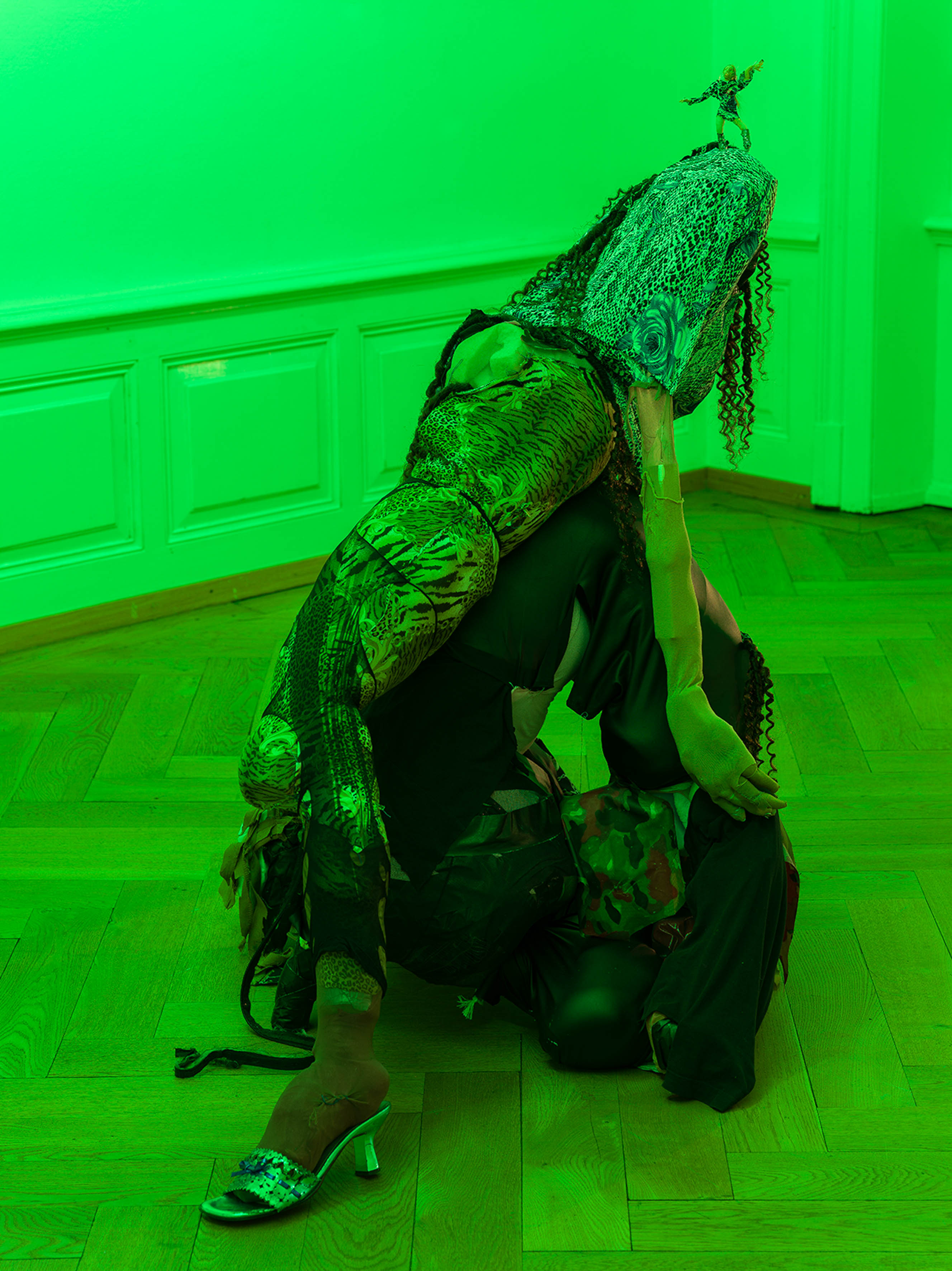


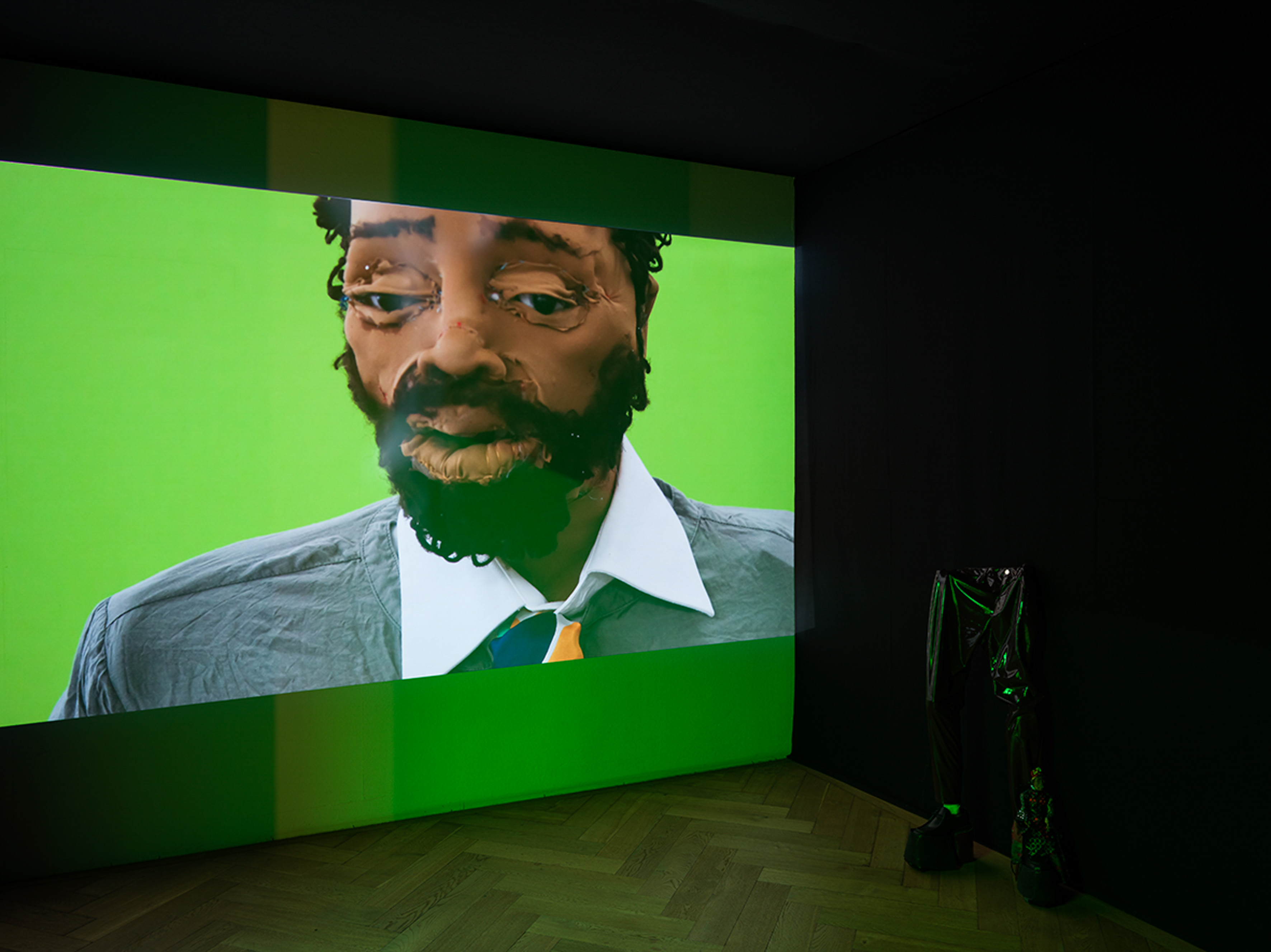
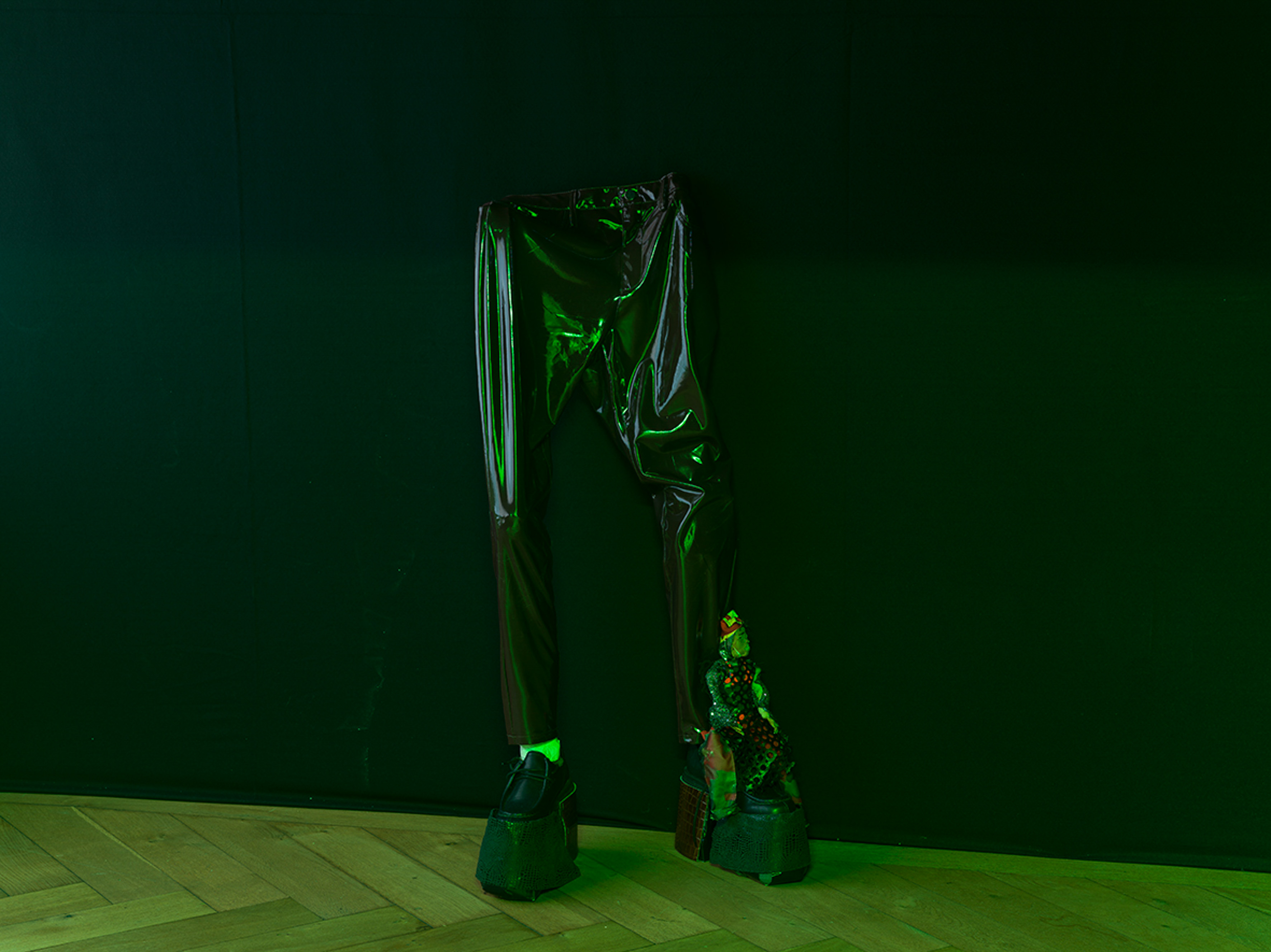





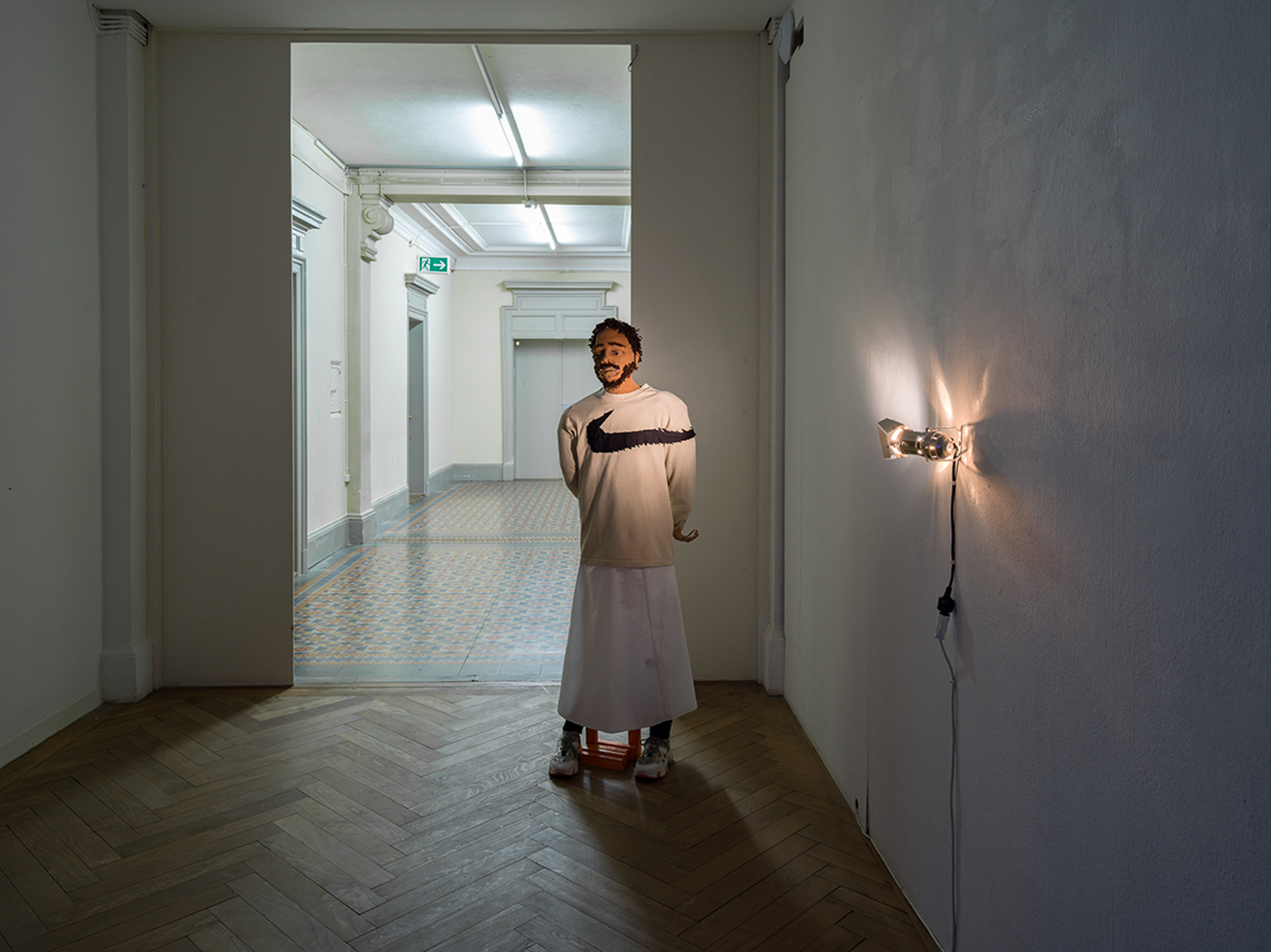
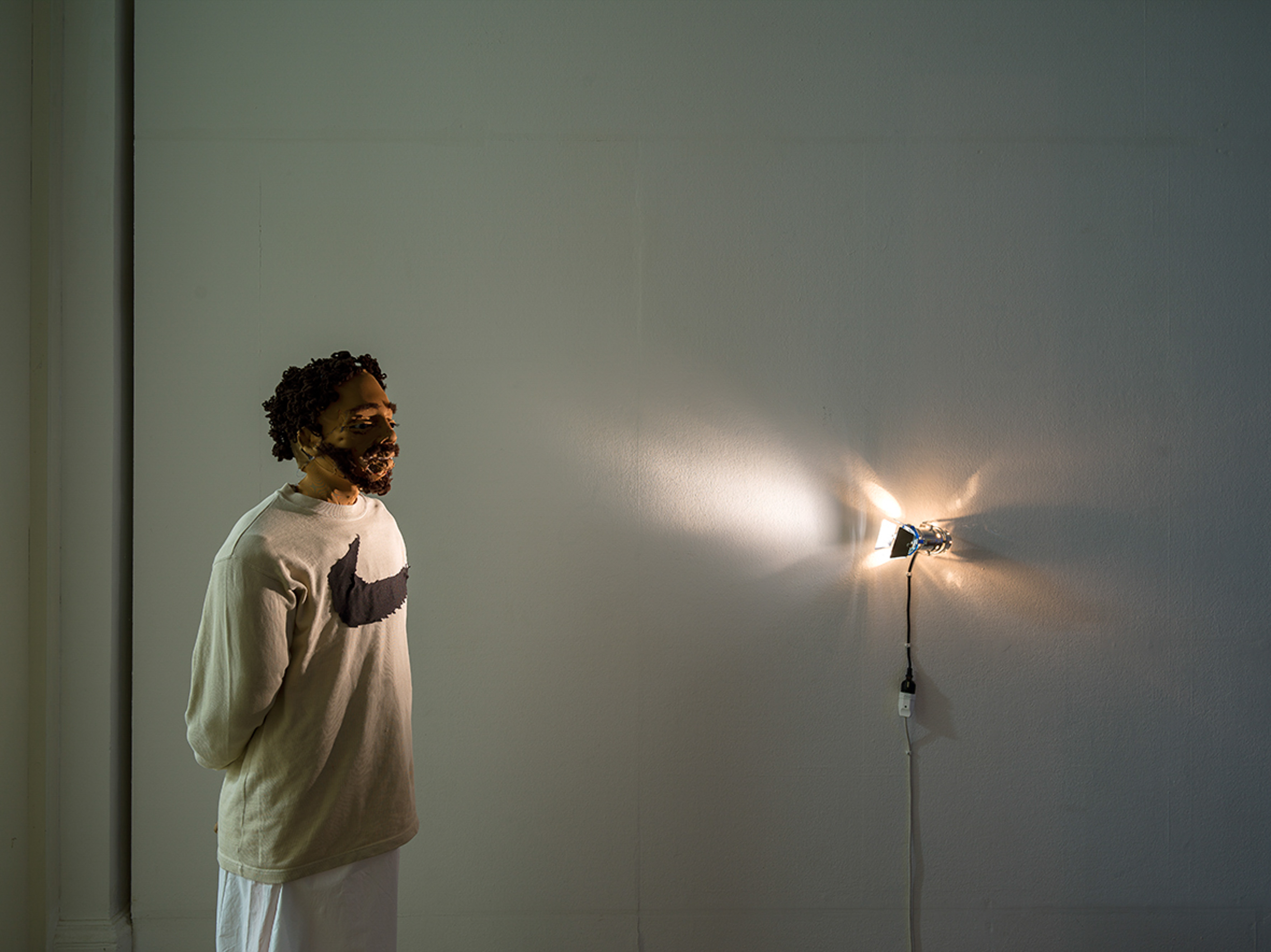



The Kunsthaus Langenthal presents the first institutional solo exhibition by Latefa Wiersch (born in Dortmund in 1982, lives and works in Zurich). The artist uses everyday things and materials to create puppets, backdrops, and objects that develop a life of their own when staged as performances and photographic assemblages: hybrid beings that combine elements of human and animal, plant, object, and machine, and that pupate and transform. Drawing on observations of everyday life and a provocative sense of humour, these inanimate-animated actors tell stories about social realities and the life of the female artist. Dreams, sexuality, violence, love, motherhood, as well as the relation between subject and object and real and artificially produced bodies represent recurrent themes in the exhibition.
In the works developed for “Original Features,” Latefa Wiersch engages with contemporary identity-political discourses to confront the gaps in her personal history as well as the prejudices and ascriptions that come with it. Inspired by the poet, scientist, and activist May Ayim and her research into Afro-German history writing, Wiersch weaves different historical storylines into a subjective, speculative narrative, which can be read as representative of the untold experiences and realities of North African migrants and their children in European countries, particularly in Germany and Switzerland. She re-purposes exaggeration and satire as strategies of self-determination, speaking back to the clichés of the exotic ascribed to her and revealing them as (mis)constructions.
The history of the French and Spanish colonisation and of the occupation of the Rhineland by French troops, including many soldiers of North African descent, after the First World War are among the starting points for Wiersch’s explorations. The racist propaganda against Black members of the occupation forces under the banner of “Schwarze Schmach” (Black disgrace), which legitimated the forced sterilisation of “Rhineland bastards” (a pejorative term for the children of Black fathers and white mothers in Germany in the 1920s and 1930s) under National Socialist reign represent a dark chapter in German history, which fuels racist discrimination to this day. The everyday experiences of foreign workers, which have immigrated to Germany since the 1960s, and autobiographical and pop-cultural markers from the 1980s to the present constitute additional levels of the exhibition.
Room 15
A live-size figure with a face made from textile, cotton stuffing, and coarse stitching marks the begin- ning of the exhibition. The outfit makes reference to Arabic men’s clothing as well as brand clothing as popular status symbols. The facial expressions were inspired by the protagonist of Rainer Werner Fassbinder’s “Angst essen Seele auf” (1974). The drama deals with the life experiences of Arabic immigrants in Germany in the 1970s and was internationally celebrated as an anti-racist statement. The main character of the film, called Ali, was played by the Tunisian-Moroccan actor El Hedi Ben Salem M’barek Mohammed Mustafa, at the time Fassbinder’s lover. The tragic life story of El Hedi was portrayed in Viola Shafik’s 2011 documentary “Jannat’Ali” (My Name is not Ali), which reveals the stereotypical conception of Fassbinder’s protagonist and the director’s and his entourage’s indif- ference towards the real person. From this perspective, the puppet represents the actor, whose voice was dubbed in later to have him embody the perfect, silent projection screen for the role of the migrant worker and his fate, which he shared with many migratised people.
Room 14
A seated figure and a small elephant puppet engage with the topics of motherhood and birth, recurring themes in Wiersch’s work. Her interest lies with the bodily changes related to pregnancy and the
societal expectations and ascriptions that come with motherhood. The face of the figure giving birth is covered by a black wig; her exposed, bulging belly displaying a Caesarean scar and her breasts confront observers entering the room. In the way she stages the figure, Wiersch adopts stereotypical ideas of being “erotic,” “wild,” and “primitive,” which are projected onto Black bodies. The clearly visible seams and ruptures in the puppet – read as female – emphasises its constructedness and unmasks the ideas of eroticism and exoticism as constructs. In an act of empowerment, Wiersch stages the belly and breasts of the figure as a face with eyes that not only tolerate being watched but that reflect the observer’s gaze.
Room 13
For the opening and closing of the exhibition Wiersch will be performing “Neon Bush Girl Society.” The performance was created in collaboration with the African-Brazilian singer and performer Dandara Modesto and the South African author and artist Rhoda Davids Abel. The three artists, all currently living in Switzerland, develop a new speculative narrative from texts, song, and performative objects, which draws on incomplete biographies of the artists and the cultural and colonial histories of different indigenous people from Africa and the African diaspora. One common motif are the gestures of retur- ning and looking back, which stand for the longing for and mourning of lost homes. One such home is found in the legend of the Damara indigenous to Namibia, who were forced to flee from enemy tribes and were turned into hybrid, half-tree, half-human beings by the gods who pitied them. The legend created the Afrikaans name “halfmens” (half-human) for a Namibian plant whose silhouette is remini- scent of a human shape. The hybrid puppets used in the performance, and which seem to meld with the bodies of the actors, were developed from this idea. Beyond their use as costumes and props, the puppets develop an independent presence as artistic objects in space over the course of the entire exhibition. The projection shows text fragments from the poem “Coloured Identity” by Rhoda Davids Abel, a recording of which also features in the performance in the form of a recording.
Room 12
In Wiersch’s artistic cosmos monstrosity and gentle soulfulness accompany one another. Scenarios from science-fiction and horror films, the characters of E.T.A. Hoffmann, Greek mythology, and Swiss legends like the story of the “Sennentunntschi” provide inspiration. The female body becomes an anthropomorphic apparatus, an emptied shell, or a functional construct, which serve as the backdrop to a grotesque situation, in which the relationship between subject and object and the roles attributed to the female body by society are negotiated.
Room 11
A hybrid being of intertwined body parts and a camel occupy the green-lighted room. They are made from construction materials and an associative mixture of textiles and clothing items that are connoted with fashion, skin colour, and camouflage. In the filmic setting the bodies become a hilly desertscape, which is traversed by miniature figures. Wiersch here adopts further ideas ascribed to the landscapes of the global South and the fauna of the African continent, and which are primarily drawn from vaca- tion experiences, visits to zoos, and representations in the media. The essayistic text fragments on the walls continue the story of El Hedi; the offensive term “camel jockey” for North African people, which crops up in the documentary about his life, is present between the lines.
Room 10
In the video work Wiersch makes her puppets come alive through stop-motion animation and combi- nes the recordings with found image material. A face morphs, a belly bloats; a foetus transforms into small African elephants; a Black puppet climbs out of an open mouth; the smoking figure of El Hedi, lost in thought, gazes into the distance. The backdrop changes between a placeless green screen, the Atlas Mountains, and the housing complex “Hannibal” in Dortmund Dorstfeld. Accompanied by Daniel Mezger’s soundtrack, a fragmentary story unfolds between the two protagonists: a father-daughter relationship, a story about identity, motherhood, and migration, in which autobiographical and more general references mix.
Performance & Artist Talk
Sunday, 13.11.22, 14:00-15:30 hrs.
Performance „Neon Bush Girl Society“ by Latefa Wiersch, Rhoda Davids Abel and Dandara Modesto. Followed by a talk with the artists and Kadiatou Diallo, Curator and Research Associate Centre for African Studies, University of Basel.
Publication
Latefa Wiersch @artpop_insta
A publication documenting Latefa Wiersch‘s long-term project on Instagram @artpop_insta will be published in September. It is designed by Dorothee Dähler and published by Präsens Editionen.
The exhibition and publication are generously supported by:
Stiftung Jaberg Langenthal
Kanton Zürich, Fachstelle Kultur
Stiftung Temperatio
Ernst und Olga Gubler-Hablützel Stiftung Dr. Georg und Josi Guggenheim-Stiftung
[Text: Kunsthaus Langenthal]
©YYYYMMDD All content and design by Daniela Grabosch + Ricardo Almeida Roque unless otherwise stated. Images, Videos and Texts can only be used under permission of the author(s).